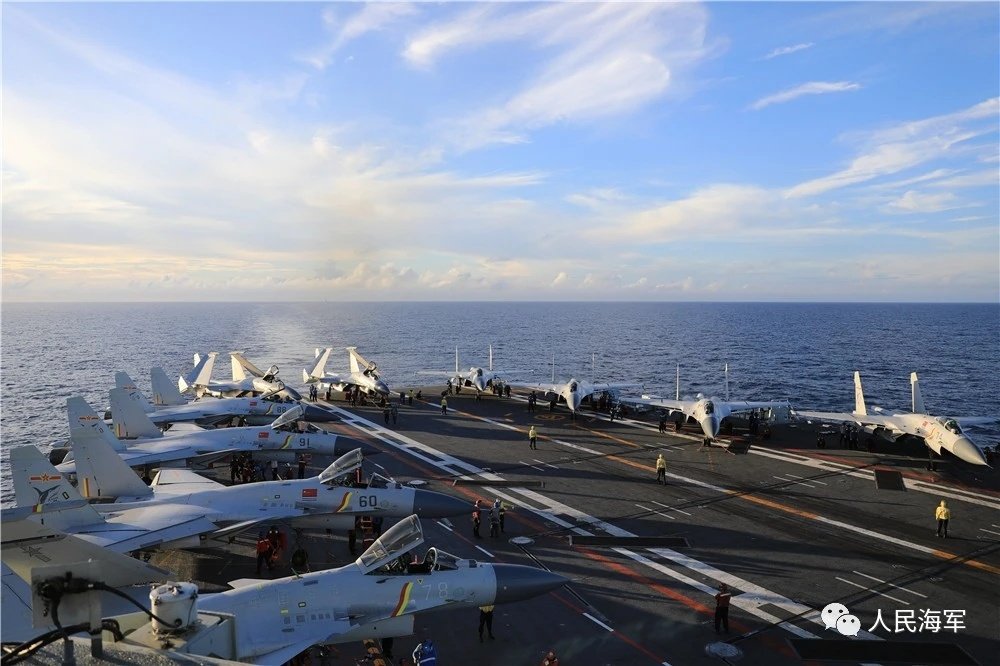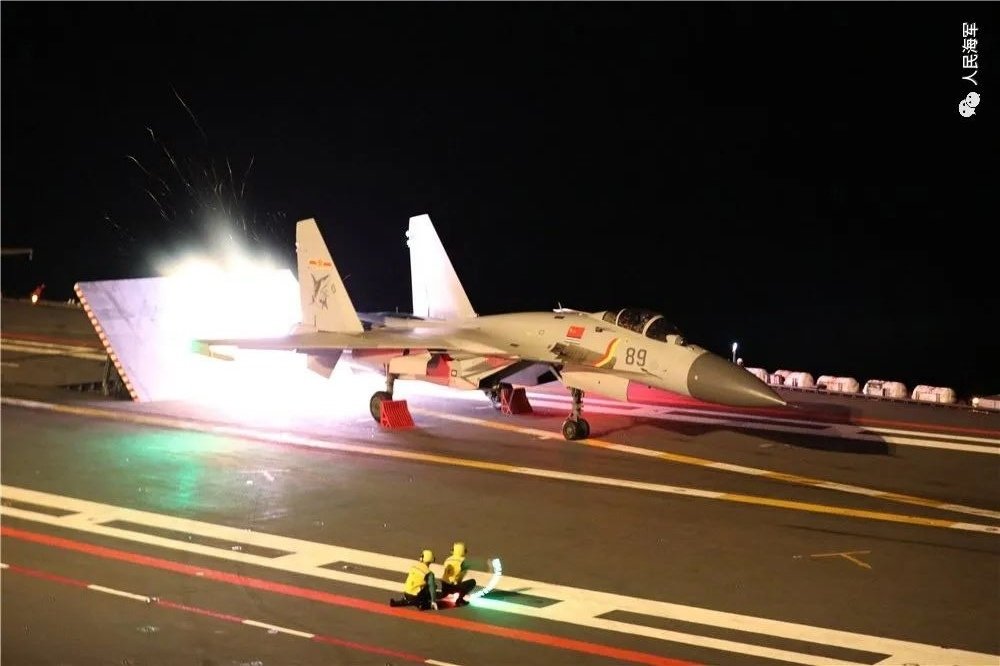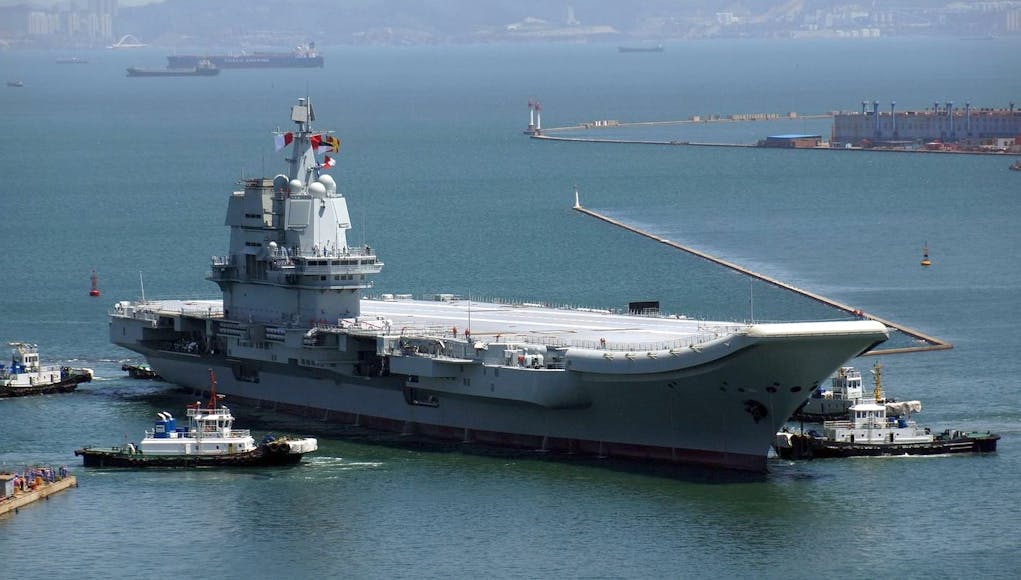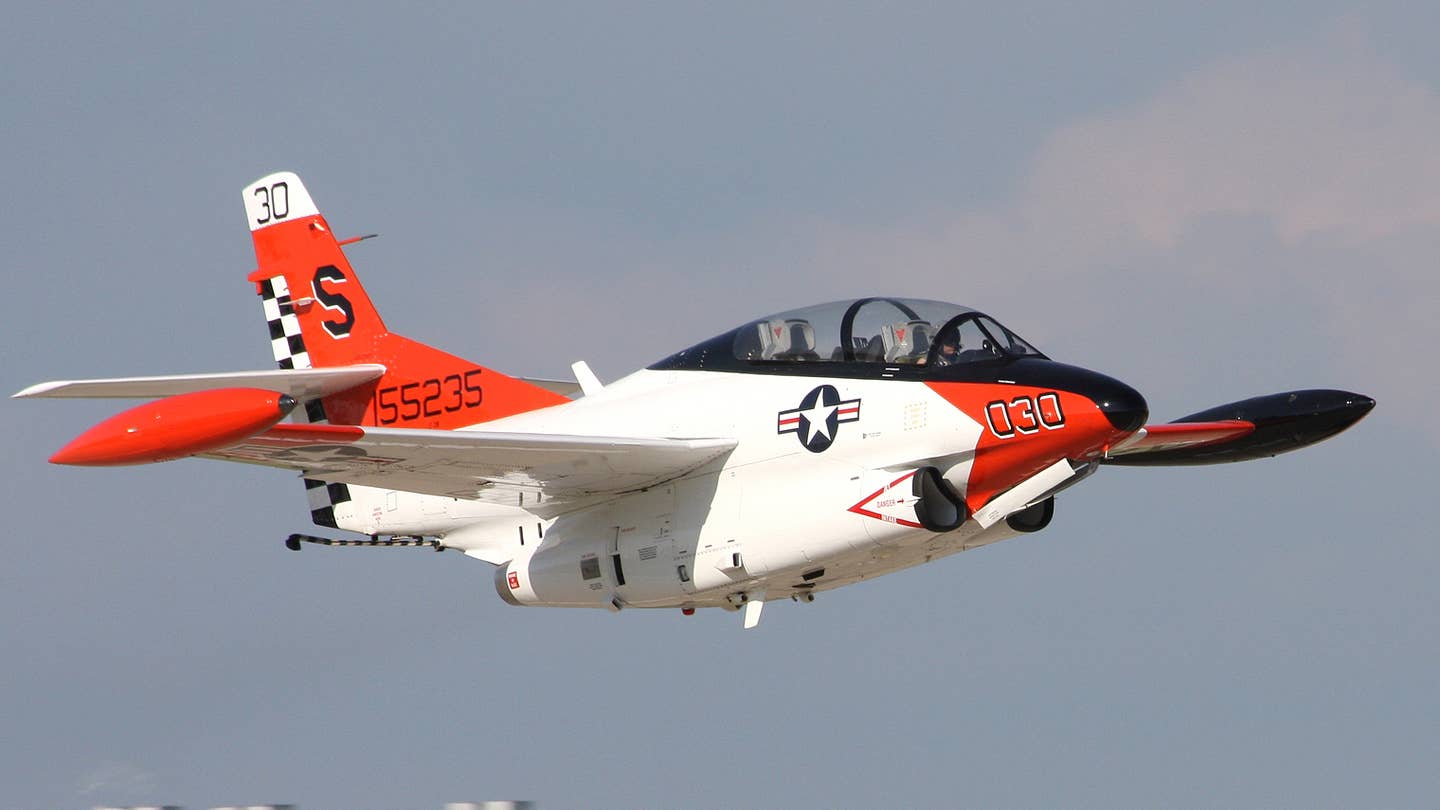Some spectacular images have surfaced online showing the Chinese PLA Navy’s J-15 carrier-capable aircraft aboard the country’s second aircraft carrier Shandong in the South China Sea.
The images appear to be of an exercise conducted by China in response to the US Navy’s Nimitz Carrier Strike Group (NIMCSG) operating in the South China Sea, starting from January 12 for the first time during the group’s 2022-2023 deployment.
The NIMCSG conducted maritime strike training, anti-submarine operations, integrated multi-domain and joint training between surface and air elements, and flight operations with fixed and rotary wing aircraft, according to the news released by the US Navy’s 7th fleet.
While the Shandong aircraft carrier group conducted “realistic combat-oriented confrontational exercises in the South China Sea,” the drills simulated hostile aircraft attacks involving the J-15 fighter jets, which took off from the Shandong and carried out interception training.

Apart from that, the PLA Navy’s statement said that the carrier group also simulated multidimensional attack and defense on the surface, in the air, and underwater, with new J-15 pilots becoming certified for nighttime operational capabilities.
According to an unnamed Chinese military expert cited by Global Times, the Shandong carrier group’s nighttime warplane sorties demonstrated that the homegrown aircraft carrier had attained a high level of operational capability since its commissioning in December 2019.

The latest drills by the Shandong Aircraft Carrier group come on the heels of the two simultaneous military drills conducted by China’s PLA Navy recently, with its Liaoning aircraft carrier performing maneuvers in the West Pacific, while the Shandong Aircraft Carrier group performing exercises in the South China Sea (SCS).
China was trying to demonstrate its “aircraft carriers’ enhanced capacity,” according to the country’s state-owned Global Times, by deploying two aircraft carriers for two separate drills in two different directions simultaneously.
The video of the drill involving the Shandong was broadcasted by China Central Television (CCTV) on January 4, which showed several J-15 fighter jets taking off the Shandong and soaring into the sky.
Video released on Jan. 4 shows that China PLA Navy aircraft carrier Shandong conducting training in South China Sea.
南海某海域,多架殲-15戰機從航母山東艦上起飛,一場實戰化演練拉開序幕。https://t.co/qITSyMSQI0 pic.twitter.com/lxeYyEIuoK
— Ryan Chan 陳家翹 (@ryankakiuchan) January 5, 2023
During the exercise, the Shandong conducted targeted training to improve its core combat capabilities, including landing and take-off, emergency response, and damage control under complex environmental conditions. The exercise also verified many emergency response plans, training methods, and support models.
Shandong is China’s second aircraft carrier after Liaoning and the first one to be domestically produced. It was launched in 2017 and entered service in 2019. It carries a J-15B ‘Flying Shark’ capable of flying from STOBAR ski-jumps.
Inspired by the Russian Sukhoi Su-33, the J-15 is currently the only carrier-borne fighter in PLA Navy’s service, with the FC-31 ‘Gyrfalcon’ being tested and awaiting serial production.
Also, in November last year, the Chinese re-engined the J-15 with the homegrown WS-10 engines to replace the Russian-made AL-31F engines, thereby increasing the country’s self-reliance on aero engine technology.
Veneer Of China’s Strong Naval Capability!
Unnamed Chinese military analysts cited by Global Times said that holding both aircraft carrier drills in different sea regions demonstrated the enhancement of China’s aircraft carriers’ capacity and the PLA Navy’s strong capability.
The capability that China may have wanted to demonstrate and how capable its PLA Navy is may be very different if recent reports are anything to go by.

China boasts the world’s largest navy by the size of its fleet, and the country has been strengthening its capability by modernizing and inducting cutting-edge vessels. However, the country lacks trained and skilled personnel to operate these technologically advanced vessels.
Last month, PLA Daily, the official publication of the PLA, admitted a shortage of trained and skilled troops required to operate the state-of-the-art military equipment.
To address this issue, China seems to be exploring several options. For example, regarding aircraft carrier operations, the Chinese allegedly hired Western-trained fighter pilots to train PLA aviators and even tried to steal a US Navy trainer jet.
Last month, a US federal court in Washington, DC., unsealed an indictment dated 2017, according to which a former US Marine Corp AV-88 Harrier II “jump jet” pilot was involved in an illegal procurement of at least one T-2 Buckeye naval jet trainer for training the Chinese naval aviators to operate from an aircraft carrier.
Daniel Edmund Duggan, 54, who served with the US Marines for more than ten years, allegedly trained PLA Naval aviators in China, South Africa, and other undisclosed locations.

As part of this training effort, Duggan was also allegedly involved in an illegal purchase of a T-2 Buckeye aircraft from a US-based aircraft dealer for this trainer by providing false information to ensure the US government approved an export license of the plane to South Africa.
The T-2 was an all-purpose US Navy jet trainer used by the US Naval Air Training Command to conduct basic jet flight training for future Navy and Marine Corps aviators. It was produced by North American Aviation, which was later purchased by Rockwell, which was, in turn, acquired by Boeing.
It featured a tandem cockpit and incorporated under-wing hard points for weapons training and arresting gear for training in carrier landings. The T-2 was also used for pilot training, including first solo flights, formation, aerobatic flying, and day and night navigation.
It was finally retired by the US Navy in 2015, and now the Naval Air Training Command uses the T-45 Goshawk aircraft.
The main focus of the training imparted by Duggan to PLA naval aviators was carrier approach and landing, a fundamental and complex skill set needed for operating from aircraft carriers that are in the service with the PLAN and presently under-development in China.
- Contact the author at tanmaykadam700@gmail.com
- Follow EurAsian Times on Google News




